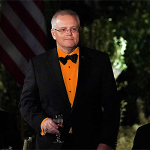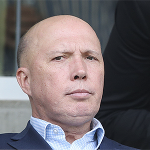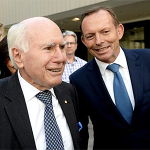In fits and starts, the Liberal Party is belatedly making the same transformation that has already occurred in the political parties of most other Western countries. Its voter base is becoming more heavily composed of the traditional working class, while it has been losing many of its upper-middle-class voters in ‘blue ribbon’ electorates to Labor, the Greens, and the Teals.
The pattern matches well the ‘somewheres’ vs ‘anywheres’ dichotomy used to analyse the UK situation by David Goodhart. Likewise, Thomas Piketty’s ‘brahmin left’ vs ‘merchant right’. The split now is not purely based on income, because the right still includes many well-off voters, instead it is a conflict between those who side with the university-educated managerial class who staff most of the public and private bureaucracies of the extended state, against those who make their living in ways either more obviously performance or market-driven, or tied via circumstances and conviction to a particular place and culture.
Unlike overseas, and despite rumblings going back at least three decades to the Liberal-National Coalition’s 1996 election win with ‘Howard’s battlers’, the changes we’ve observed locally serve to illustrate how resilient our two-party political system has been: there’s been no rise of a new third party like the nationalist parties of Europe; no collapse of incumbent parties like the Socialist Party in France or the Tories in the UK.
Here, Labor have tamed the challenge to their left from the ultra-brahmin Greens. Although there is vicious competition in certain inner-city seats, the Greens seem to have hit their vote ceiling and reliably funnel 80 per cent of their preferences back to Labor.
On the right, while there have been periodic waves of discontent with the cosmopolitan direction set initially by the Whitlam government, it has never translated into a sustained political insurrection, due in no small part to the fragmentation and lack of organisation of the minor party right.
For the moment, it appears as if the Liberal Party led by Peter Dutton is successfully absorbing the structural changes forced upon it by the loss of the Teal seats. Dutton’s leadership signals an active acceptance and participation in the shift to a new electoral configuration, enabled by a national-conservative ideological orientation. Signs of this change can be seen in the Liberal Party’s choice to oppose the Voice to Parliament, making the positive case for nuclear energy and starting the conversation on moving away from a high-immigration economic model (albeit one that Peter Dutton seems to be attempting to move away from). Say goodbye to ScoMovian/Turnbullian ‘management’, politics has returned!
The enthusiasm for the Misinformation and Disinformation bill was very close to being an unforced error – the relative ease with which Peter Dutton has been able to move the Liberal Party towards the national-conservative right has in large part been due to the ferment of conservative social media, particularly enabled by Elon Musk’s acquisition of Twitter, and the subsequent loosening of the censorship of independent conservative viewpoints. Without Musk’s acquisition, things might have looked very different.
The structural tensions faced by the party have been playing out in internal factional manoeuvres as well. The loss of the Teal seats has done immense damage to the factional integrity of the Liberal left. Without customary access to the sitting member that used to be almost automatic, Liberal Party branches in the Teal seats face the likelihood of a slow decline, meaning less input to Senate preselections and less relative influence on various other parts of the party machinery.
Viewed in this context, the left’s recent dominance of Senate preselections is part of a land-grab to ensure as much representation in the party as their current strong central position enables, before their strength starts to recede in the coming years. Senator Jim Molan was not replaced by a fellow right-winger in NSW and in Queensland, Gerard Rennick lost his winnable spot for the upcoming election, electing to form his own minor party.
Unsteadily but inexorably, in personnel and policy, the Liberal Party is transforming into a national-conservative party. Cynics will remark that this is political suicide: the reason that the major parties so thoroughly hug the mushy middle is because of the inexorable logic of the median voter theorem. Depart from the centre and get crushed.
The federal election will be the ultimate test of this notion, a fork in the road. The Liberals may win back some of the Teal seats, although likely not all – the recent resignation of Liberal moderate Paul Fletcher is a signpost here. Combined with possible wins in western Sydney, coastal NSW, and suburban Melbourne, the internal factional balance will preclude any move back to a Liberal Party that merely represents the pro-corporate wing of the managerial state. If he can pull this off, Peter Dutton will have defied the conventional wisdom by finding a new centre, replicating the voting pattern we saw with the crushing victory of the ‘No’ side in the Voice Referendum. Getting there first offers the opportunity of a durable majority and the chance to make the changes required to restore the effectiveness of the Commonwealth government in the face of serious challenges to the prevailing global order.
The weakness of the minor party right allows the Liberals to more easily make this shift. A competent, united right wing voter bloc would force the Liberal Party to make some very difficult trade-offs in a short period of time – particularly on immigration where the choice will increasingly be between electoral viability and corporate support. As it stands right now, the minor party threat is not going to be a factor at the 2024 election.
So where does this leave Labor? If things play out as described, they will be in a very tough spot. The modern Labor Party, like the Democratic Party in the US, is an assemblage of multicultural and bureaucratic interest groups, with a remnant working class base, overseen by an indifferent elite. The leakage of the old base is what has strengthened the Liberals, but these gaps are anticipated to be plugged by immigrants, as explicitly noted. If the Liberals gain government, slash immigration and start winding back aspects of the current government’s bureaucratic creep, Labor will find it needs to start appealing to its old base, something I suspect party elites will find both ideologically inconvenient and sociologically distasteful. The Danish Social Democrats have made this transformation (gaining power in the process) and with recent announcements on immigration the Canadian Liberals and UK Labour may be attempting the same thing, but it will be a difficult transition.
On paper, the Liberal Party seems much better positioned to gain and keep government over the next 10-15 years, but only if they can continue to make the necessary departures from the legacy consensus that they’ve already made a start on. National-conservatism is really no stretch for the Liberal Party, despite the seeming terminological difference between ideology and party name. As has been pointed out by the National Conservative Institute’s Dan Ryan, there is likely little that Robert Menzies would’ve found objectionable about the high-level aims of the national-conservative movement. As conservatives will not be surprised to find, past wisdom has a long shelf-life.
Alex McEncroe is a Liberal Party member who is based in regional NSW. He writes at ongoingtangent.substack.com








